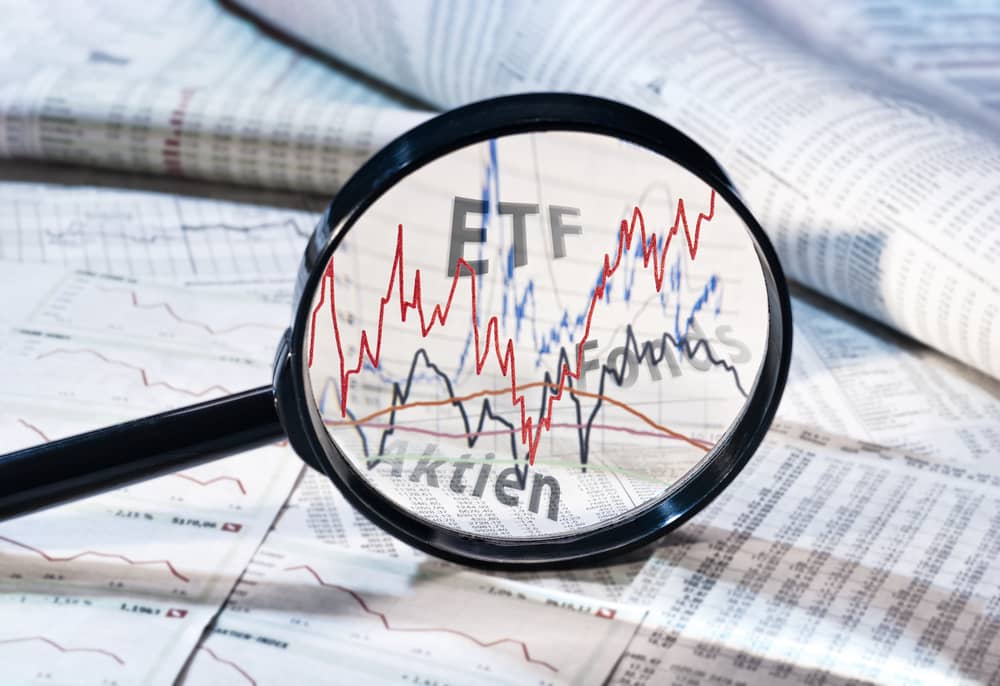As ETF assets approach one-fifth of all fund assets under management (AUM) globally, a growing number of eyes are turning to the industry to ensure the wrapper shapes markets in a positive way.
Europe and US currently house over $10trn assets under management, according to data from Bloomberg Intelligence, up from roughly $1.2trn at the end of 2010.
The allure of low-cost, fire-and-forget investing has been a mainstay for the ETF industry’s incredible rise, however, its continuing ability to scale means the entire product class will have to become more thoughtful about its impact on the market if it is to avoid an eventual moment of reckoning.
Speaking on one potential risk, Robin Wigglesworth, global finance correspondent at the Financial Times, toldETF Stream:“ETF ownership is one of my biggest concerns. We all need to be concerned about the inevitable endpoint of the economics of indexing.”
Of course, these concerns are only so pronounced because of the virtues of ETFs – such as democratising access and lowering the cost of accessing many investment niches – which have made the product class such a force.
Reflecting on the best expert scrutiny of the industry this year, ETF Stream has selected the five best academic papers on ETFs in 2021.
1. Is Stock Index Membership For Sale?
Commencing our list, research conducted by the National Bureau of Economic Research (NBER) “consistently” found companies purchasing services – such as ratings – from benchmark provider S&P Global had a higher chance of entering the renowned S&P 500 index. Meanwhile, companies large enough to be considered for inclusion were more likely to buy ratings.
Also, in periods where mergers were taking place between S&P 500 companies or when S&P 500 entry may lead to high cumulative abnormal returns, firms ranked 300 to 700 in the US in terms of market cap had the strongest incentive to purchase S&P services, NBER found.
Illustrating this troubling link, purchases of S&P Global ratings by foreign firms fell 72% after the firm announced companies not headquartered in the US would not be eligible for inclusion in the S&P 500. This raises questions about whether the discretionary framework for selection in S&P Dow Jones Indices’ flagship index is still fit for purpose.
This research from the NBER highlighted the issue of using a discretionary committee, rather than a stringent rules-based system when performing constituent selection and deletion. It also highlights the passive-active fallacy – given even supposedly passive index trackers are exposed to elements of active input.
Large asset managers including BlackRock, State Street Global Advisors (SSGA), T.Rowe Price and Vanguard vote favourably towards clients during resolutions, representing a clear conflict of interest according to a report by non-profit organisation As You Sow.
Of millions of votes sourced from Insightia, researchers found BlackRock was three times more likely to vote with shareholders on climate issues when no business ties were present – 9.5% with shareholders where no relations existed versus 3.1% when commercial ties were present. More severely, SSGA would vote with shareholders 37% of the time when no relations existed versus 23% when relations were present.
Overall, all four asset managers favoured management proposals while commercial relations were present in at least five of the six years studied. Department of Labor 5500 disclosures also revealed all four received a total of $489m in compensation from 932 corporations where they also voted using proxies, which are more likely to vote in line with management.
Concluding, As You Sow recommended asset managers begin disclosing existing business and contractual relationships when casting votes; outsource votes that may incur conflicting interests; recuse proxy voting where a conflict of interest is present; describe and make voting policies transparent to investors; and seek input from clients on voting policies.
3. Climate funds: Are they Paris aligned?
Research by the think-tank, InfleunceMap, attempted to lay bare the extent of greenwashing in the asset management industry by revealing the majority of ESG and climate strategies fall short of the Paris Agreement.
Overall, it found 71% (421) of the 593 equity funds falling into the broad ESG category scored negatively on Paris Alignment, while 55% of the 130 stricter climate-specific strategy also fell short of Paris Alignment. Ironically, of the six sub-categories of climate funds, those labelled Paris Aligned were the worst offenders, with an average score of -19%.
InfluenceMap also bemoaned the fact these funds have $153m of aggregate exposure to the fossil fuel value chain via holdings in firms such as TotalEnergies, Kinder Morgan, Enbridge, Neste, Halliburton, Chevron and ExxonMobil. It added 25% of climate funds and 42% of ESG strategies allocated to companies with fossil fuel reserves – and on average the latter appeared to indirectly own more reserves per dollar than a vanilla S&P 500 exposure.
The blame for this, the research said, is with passive strategies that track market benchmarks while applying exclusions or weighting criteria. However, there is massive differentiation between different product issuers, with SSGA funds averaging an alignment score of -14%, while Invesco products scored positive 23%.
InfluenceMap concluded its findings display the importance of investor due diligence but overall, core ESG passive funds struggle to reconcile their hunt for market beta with alignment with climate goals.
4. Index providers: Whales behind the scenes of ETFs
Research provided by authors from the universities of Washington, California and the Johns Hopkins Carey business School revealed index providers wield strong market power and charge large markups to ETFs, which end up impacting investors through fees.
The paper made three observations: the ETF indexing market is highly concentrated; investors care about index provider identities when selecting ETFs despite little variation in returns; and roughly one-third of all ETF management fees can be attributed to index licencing fees paid to providers.
Evidencing the latter point, the report found one-third of the 0.09% total expense ratio (TER) charged by the SPDR S&P 500 ETF Trust (SPY) can be attributed to the licencing cost charged by S&P Dow Jones Indices, which comes to 0.03% of AUM per year – not to mention a $600,000 flat fee.
Another example is the Invesco QQQ Trust (QQQ), which charges a TER of 0.20% but its sponsor is required to pay a licencing fee of 0.09% per year to NASDAQ, which owns the underlying NASDAQ-100 index.
Overall, the research concluded around 60% of index licencing fees are markups charged by index providers. Eliminating the market power of index providers could reduce ETF management by as much as 30%.
5. Breaking the bond: Primary markets and carbon-intensive financing
Our list closes with research from the Oxford Sustainable Finance Programme at the University of Oxford’s Smith School of Enterprise which found 13.6% of new bonds purchased by the 35 largest US-listed corporate bond ETFs between 2015 and 2020 were issued by some of the world’s most carbon-intensive companies. This number is higher than the average of 10% for the global corporate bond market, the report found.
This dynamic was particularly strong in high yield ETFs, which had a Primary Market Carbon Exposure (PMCE) – the proportion of primary market transactions that occur in carbon-intensive sectors – score of 20.5% versus 15.8% for the wider market.
Unfortunately, the inclusion of these bonds is a result of ETFs attempting to remain efficient and reduce tracking error. New corporate bond issues are often issued at a discount to attract buyers. This encourages ETF portfolio managers to purchase new issues before they are included in an underlying index – if they avoided primary market issuance altogether, ETF performance would be negatively impacted.
In a letter to investors, BlackRock said its ETFs will continue to invest in carbon-intensive sectors due to the nature of the global economy, however, the research authors warned this could create a situation in which ETFs become the buyers of “last resort” for the world’s worst polluters, while active investors reduce their exposure.




